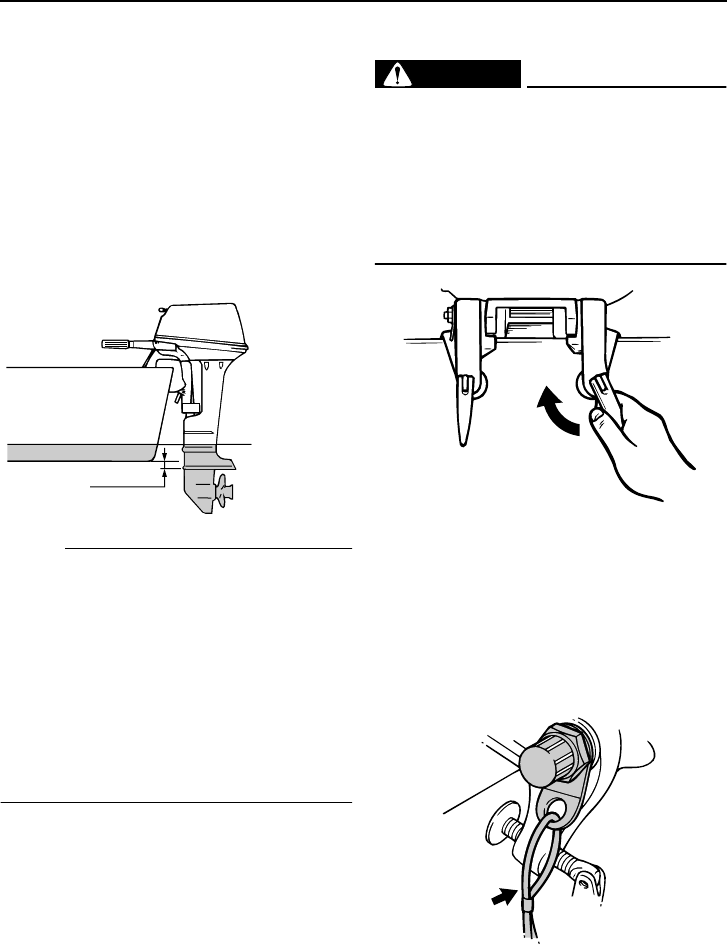
Operation
17
motor greatly affects the water resistance. If
the mounting height is too high, cavitation
tends to occur, thus reducing the propulsion;
and if the propeller tips cut the air, the engine
speed will rise abnormally and cause the en-
gine to overheat. If the mounting height is too
low, the water resistance will increase and
thereby reduce engine efficiency. Mount the
outboard motor so that the anti-cavitation
plate is between the bottom of the boat and
a level 25 mm (1 in.) below it.
NOTE:
●
The optimum mounting height of the out-
board motor is affected by the boat and
motor combination and the desired use.
Test runs at different heights can help de-
termine the optimum mounting height.
Consult your Yamaha dealer or boat man-
ufacturer for further information on deter-
mining the proper mounting height.
●
For instructions on setting the trim angle of
the outboard motor, see page 25.
EMU26970
Clamping the outboard motor
1. Place the outboard motor on the tran-
som so that it is positioned as close to
the center as possible. Tighten the tran-
som clamp screws evenly and securely.
Occasionally check the clamp screws
for tightness during operation of the out-
board motor because they could be-
come loose due to engine vibration.
WARNING
EWM00640
Loose clamp screws could allow the out-
board motor to fall off or move on the
transom. This could cause loss of control
and serious injury. Make sure the tran-
som screws are tightened securely. Oc-
casionally check the screws for tightness
during operation.
2. If the engine restraint cable attachment
is equipped on your engine, an engine
restraint cable or chain should be used.
Attach one end to the engine restraint
cable attachment and the other to a se-
cure mounting point on the boat. Other-
wise the engine could be completely lost
if it accidentally falls off the transom.
3. Secure the clamp bracket to the transom
using the bolts provided with the out-
ZMU02011
0–25mm
(0–1in.)
ZMU02012
ZMU02013


















